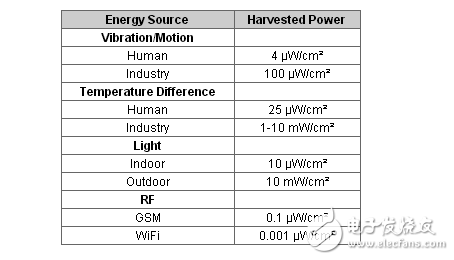
资料下载

无线传感器网络功率管理面临的挑战
无线传感器网络功率管理面临的挑战
在过去十年中,电子产品的能源效率不断提高,使电子工业接近实用、成本效益高的无线传感器网络(WSN)。毫无疑问,这些网络的许多潜在应用程序都存在,而且它们非常有吸引力,提供快速简便的安装,不需要预先存在的基础设施来支持它们,灵活性、可伸缩性和更多。然而,直到最近,这些明显的优势还难以实现,主要是由于提供必要的远程和理想自治能力所带来的挑战。电池已经成为主力的解决方案,但本质上影响节点的可靠性、寿命、尺寸、欲望和许多无线传感器网络独立运营的电网。替代策略已寻求电池容量的改善行动以蜗牛的速度相比,在半导体的发展发生率(参见穆尔´定律)。
因此,毫不奇怪,现在人们对能源收集有浓厚兴趣,即利用周围的物理能源为无线网络提供永久的电源,减少或可能消除对原电池的依赖。IDTechEx,在这样的市场研究公司,表明7亿美元花在收获2012收益收获是设定在未来的decade1增长到50亿美元(即大于20%的年增长率)。

Wireless sensor networks have been enabled today by the availability of both ultra-low power radios and optimized low power microcontroller products. However, perhaps the biggest challenge remaining is that of power management for these systems. This article will look at some of the challenges of supplying long operating life for autonomously powered WSNs and considers some of the current power management products available including: Advanced Linear Devices‘ EH42x5/EH300 parts, the LTC3105 and newLTC3129 from Linear Technology; a new low power boost from Intersil (ISL9111A); the BQ25504 from Texas Instruments and finally STMicroelectronics’ SPV1040.
The article concludes by answering the question of whether energy harvesting now a viable source of power for autonomous micro-power systems.
声明:本文内容及配图由入驻作者撰写或者入驻合作网站授权转载。文章观点仅代表作者本人,不代表电子发烧友网立场。文章及其配图仅供工程师学习之用,如有内容侵权或者其他违规问题,请联系本站处理。 举报投诉
- 相关下载
- 相关文章






